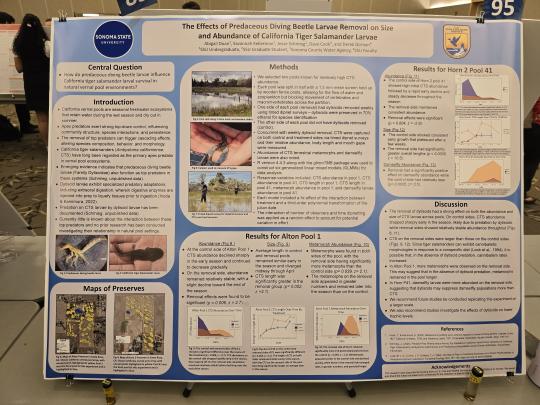The Effects of Predaceous Diving Beetle Larvae Removal on Size and Abundance of California Tiger Salamander Larvae

Abstract
- California vernal pools are seasonal freshwater ecosystems that retain water during the wet season and dry out in summer
- Apex predators exert strong top-down control, influencing community structure, species interactions, and persistence.
- The removal of top predators can trigger cascading effects, altering species composition, behavior. and morphology.
- California tiger salamanders (Ambystoma californiense; CTS) have long been regarded as the primary apex predator in vernal pool ecosystems.
- Emerging evidence indicates that predaceous diving beetle larvae (Family Dytiscidae) also function as top predators in these systems (Schmieg, unpublished data).
- Dytiscid larvae exhibit specialized predatory adaptations, including extraoral digestion, wherein digestive enzymes are injected into prey to liquefy tissues prior to ingestion (Inoda & Kamimura 2022).
- Predation on CTS larvae by dytiscid larvae has been documented (Schemig, unpublished data).
- Currently little is known about the interaction between these top predators and no prior research has been conducted investigating their relationship in natural pool settings.
Project Date: Spring 2025
Team:
- Abigail Doan
- Savannah Kellerman
- Jesse Schmieg
- Dave Coo
Faculty:
- Derek Girman
Location:
- Sonoma State University
Department:
Biology

